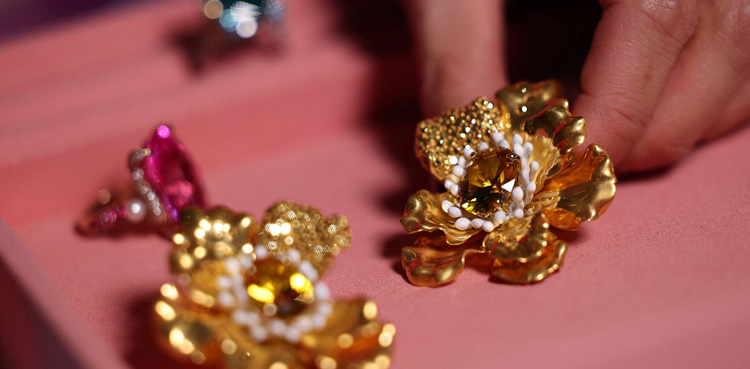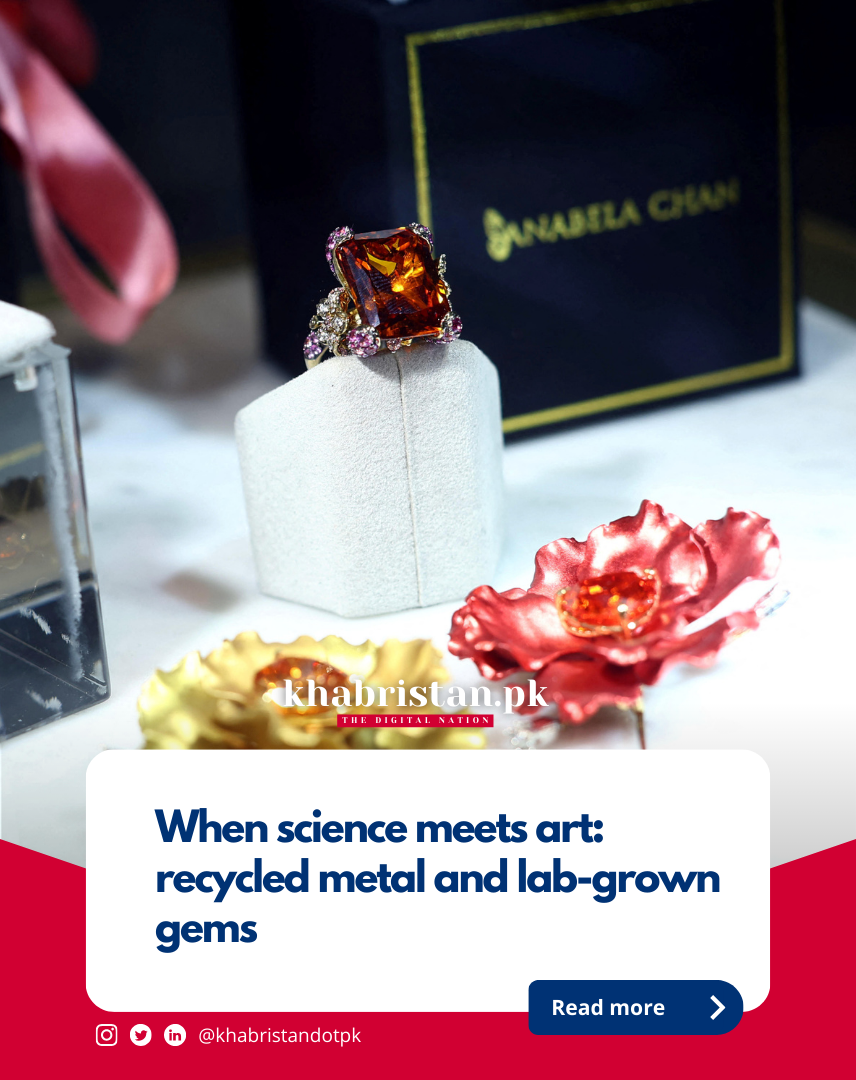British designer Anabela Chan values jewelry made with lab-grown gems and recycled metal over natural diamonds due to ethical reasons. Her designs have seen increased demand during the COVID-19 pandemic, reflecting consumer interest in sustainable and ethical jewelry. The lab-grown jewelry market has experienced substantial growth, offering new opportunities for innovative and sustainable jewelry design.

For some a natural diamond, created over billions of years, is the ultimate luxury, but an award-winning British designer sees greater worth in jewellery crafted using laboratory-grown gems and metal from recycled cans.
Anabela Chan said she chose her materials after witnessing what she said were poor working conditions in diamond mines.
“These are some of the most precious and valuable commodities in the world, that just didn’t make any sense to me,” she said, in her Knightsbridge boutique in central London.
Instead, her designs rely on lab-grown diamonds, recycled aluminium from cans and pearls grown using regenerative farming techniques.
Chan’s company does not give sales figures but said it had seen strong demand since the COVID-19 pandemic. She won the “Game Changer” category at the British Luxury Awards in November.
According to Edahn Golan Diamond Research & Data, the lab-grown jewellery market has seen annual growth of 20% in recent years, driving global profits to $15 billion.
As more producers enter the market, selling prices for lab-grown diamonds have fallen, and brands are looking to differentiate themselves, particularly through the jewellery design.
At major retailer of lab-grown diamonds Pandora, head of diamonds Joshua Braman said lab-grown gems could create extra scope for jewellery design.
Another point of difference can be sustainability.
Chan relies on suppliers who use technology to capture carbon dioxide emissions that would otherwise be released into the atmosphere in order to make diamonds, “so effectively taking something negative and turning it into something positive,” Chan said.
In the realm where science and art converge, a fascinating world emerges. When we explore the beauty of recycled metal and the brilliance of lab-grown gems, we witness the seamless fusion of innovation and creativity. This convergence presents a profound opportunity to champion sustainability and technological advancement within the realm of fine jewelry and artistry. With a renewed focus on eco-consciousness and ethical sourcing, recycled metal has become a compelling choice for artisans seeking to infuse their creations with a touch of environmental mindfulness. These sustainable materials not only convey a powerful message of responsible consumption but also offer a nuanced visual allure that speaks to the modern sensibilities of today’s discerning consumers. Alongside this evolution, lab-grown gems have carved a remarkable niche in the world of jewelry design. Embodying the meticulous precision of scientific craftsmanship, these gems enchant us with their ethically sound origins while simultaneously captivating our artistic hearts with their exquisite radiance. The enchanting aesthetic synergy of recycled metal and lab-grown gems encapsulates a narrative of ingenuity and sophistication. This compelling interplay between sustainable materials and technological ingenuity serves as a testament to the harmonious coexistence of science and art. As we navigate this captivating convergence, we are invited to behold a tapestry of creativity and innovation that transcends traditional boundaries, enriching both the artistic landscape and our collective consciousness.
Source: ARY NEWS
Keywords: recycled metal, lab-grown gems, sustainable jewelry, British designer, ethical sourcing, regenerative farming, pandemic demand, lab-grown diamond market, sustainability, carbon dioxide capture
Summary:
Award-winning British designer Anabela Chan creates sustainable jewelry using recycled metal and lab-grown gems, inspired by ethical concerns about traditional diamond mining. Her designs incorporate lab-grown diamonds, recycled aluminum, and pearls from regenerative farming. With strong demand during the pandemic, the lab-grown jewelry market has seen significant growth, driving global profits. Sustainability and ethical sourcing are key differentiators for brands in this market, with a focus on capturing carbon dioxide emissions to create positive environmental impact.
Disclaimer:
This content is AI-generated using IFTTT AI Content Creator. While we strive for accuracy, it’s a tool for rapid updates. We’re committed to filtering information, not reproducing or endorsing misinformation. – Khabristan.pk for more information visit privacy policy








Leave a Comment